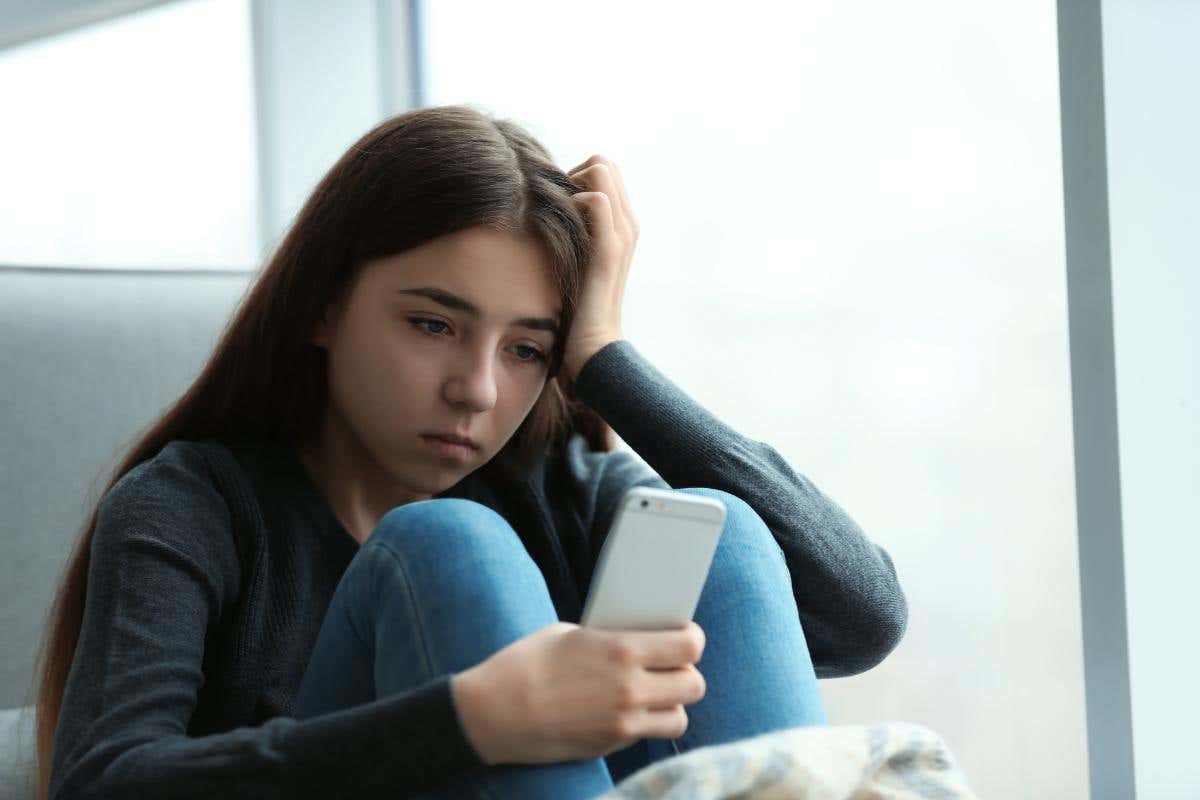The power of texting in preventing youth suicide
Researchers have developed an automatic texting system and found the intervention helped youth at risk for suicide feel hopeful and supported during a period of heightened risk.

One approach gaining traction is Caring Contacts, a method of providing ongoing care and support through messages sent via text, postcards, or letters. (CREDIT: CC BY-SA 3.0)
The mental health crisis among young people continues to challenge healthcare providers, who are constantly seeking innovative ways to bridge gaps in care. For those grappling with suicidal thoughts and behaviors, the period following discharge from inpatient care or an emergency department is critical. It’s a time when they need additional support to safely transition back to their daily lives.
One approach gaining traction is Caring Contacts, a method of providing ongoing care and support through messages sent via text, postcards, or letters. These messages are designed to offer validation and encouragement without pressuring patients with demands, such as reminding them to attend appointments.
At Nationwide Children’s Hospital, the Caring Contacts program has been implemented in a text-based format as part of their Zero Suicide quality improvement initiative. Zero Suicide is a comprehensive framework aimed at reducing suicides within healthcare systems, incorporating best practices like routine suicide risk screenings followed by evidence-based assessments and safety planning for those identified as at risk.
A recent study published in JMIR Pediatrics and Parenting highlights the impact of an automated Caring Contacts texting system developed by the Center for Suicide Prevention and Research (CSPR) at Nationwide Children’s. The study found that this intervention helped at-risk youth feel more hopeful and supported during times of heightened vulnerability. Such efforts to improve transitions in care are vital for enhancing youth suicide prevention outcomes.
“Research has shown that patients are about 300 times more likely to die by suicide in the first week after being discharged from the hospital and 200 times more likely within the first month, compared to the general population,” explains John Ackerman, PhD, a child clinical psychologist and suicide prevention clinical manager at CSPR. “It’s crucial to reach patients in their everyday environments, supporting them before, during, and after a crisis. This means ensuring that messages of hope and validation are accessible through the technology they use most – their phones.”
The study at Nationwide Children’s focused on patients discharged from high-acuity behavioral health services during a suicidal crisis. Upon discharge, patients were enrolled in the Caring Contacts program, receiving a series of supportive text messages over a four-month period.
Related Stories
These messages, which began the day after discharge, were designed to promote hope, inclusivity, and connection, and were accompanied by crisis resources. The initiative included three phases, starting with message content development in 2018 and concluding with full implementation and data collection by 2021.
During the study, over 1,700 patients participated in the Caring Contacts program. Post-text satisfaction surveys revealed that 83% of respondents felt moderately to very hopeful, and 88% felt moderately to very supported.
Additionally, 92% of respondents believed their peers would benefit from these messages, and 86% expressed a desire to continue receiving such messages in the future. Interestingly, the lowest enrollment rates were observed among 13-year-olds, while the highest rates were among 18-year-olds, with females enrolling at a higher rate (54%) than males (48%).
“While more work is needed to measure clinical effectiveness and improve enrollment rates, we are encouraged by the results,” says Glenn Thomas, PhD, the study’s lead author and a clinical psychologist at Nationwide Children’s. “As the first children’s hospital to study and integrate this approach as part of a broader quality improvement framework, we are pleased with the initial outcomes. Patients need to know that we are here for them even after they leave our care.”
The Caring Contacts program represents a significant step forward in youth suicide prevention, offering a model that other healthcare providers might consider adopting to support their own at-risk patients during critical periods of transition.
Note: Materials provided above by The Brighter Side of News. Content may be edited for style and length.
Like these kind of feel good stories? Get The Brighter Side of News' newsletter.
Joshua Shavit
Science & Technology Writer | AI and Robotics Reporter
Joshua Shavit is a Los Angeles-based science and technology writer with a passion for exploring the breakthroughs shaping the future. As a contributor to The Brighter Side of News, he focuses on positive and transformative advancements in AI, technology, physics, engineering, robotics and space science. Joshua is currently working towards a Bachelor of Science in Business Administration at the University of California, Berkeley. He combines his academic background with a talent for storytelling, making complex scientific discoveries engaging and accessible. His work highlights the innovators behind the ideas, bringing readers closer to the people driving progress.



